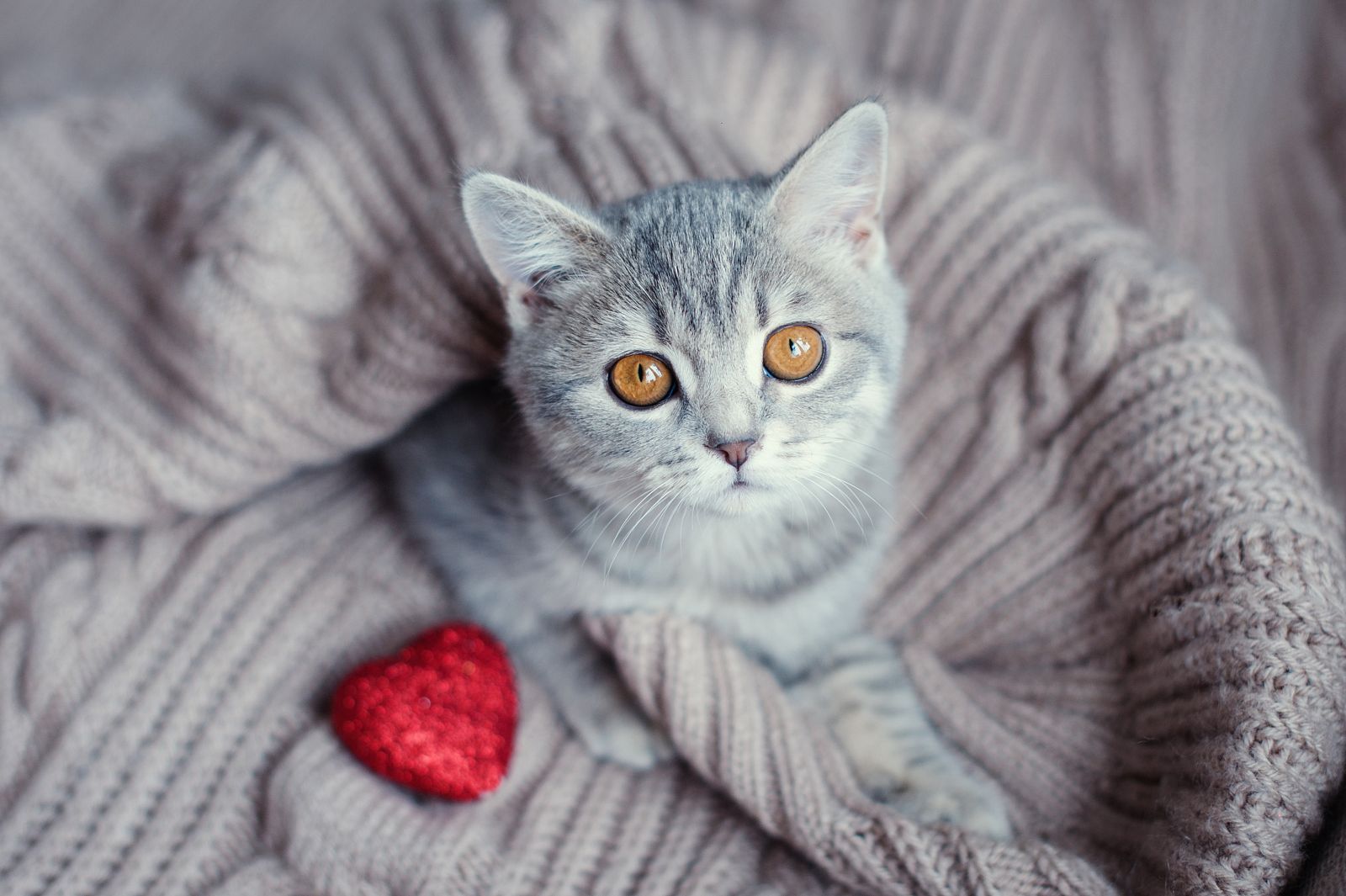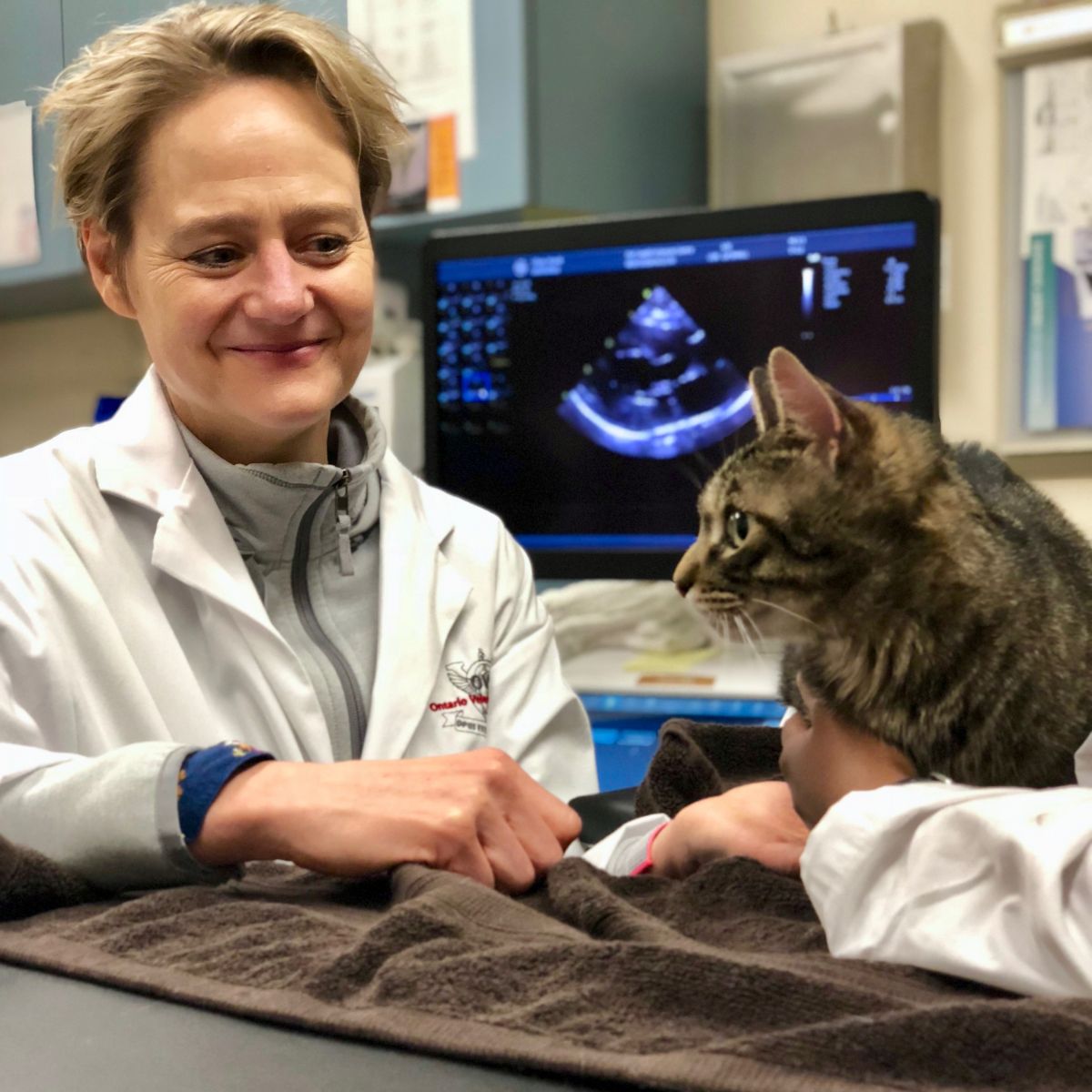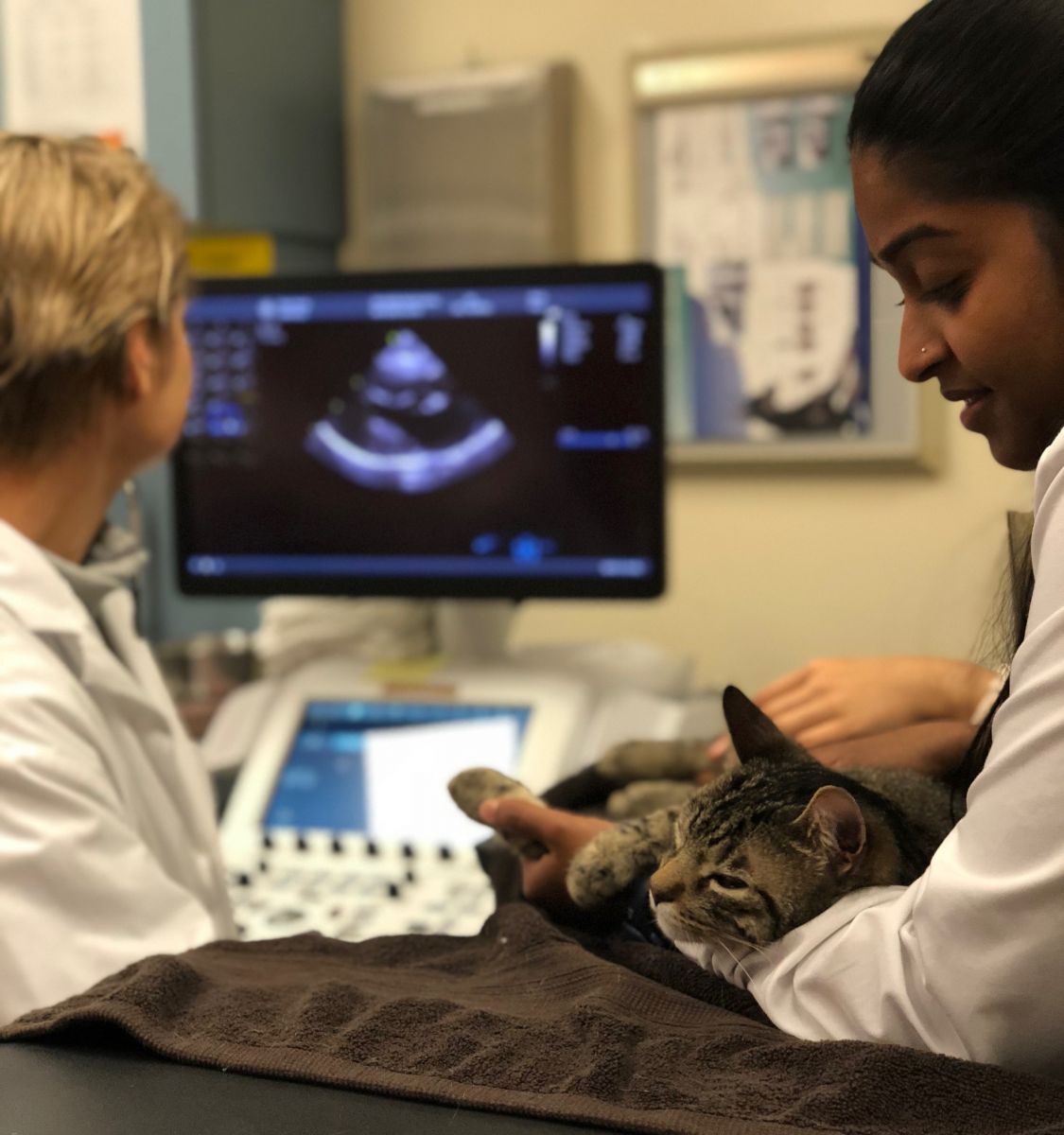Searching for answers for a common heart disease in cats

Ontario Veterinary College (OVC) cardiologist Dr. Sonja Fonfara is passionate about the study and treatment of heart disease in cats. Her quest is to improve the health and welfare of our feline friends by investigating a common heart disease called hypertrophic cardiomyopathy (HCM). HCM occurs when the heart muscle becomes abnormally thick, making it stiff and impairing its function. In some cats this can lead to heart failure and death. Approximately 15 per cent of cats develop HCM in their lifetime and once a cat is more than 10 years of age the risk of developing the disease doubles to nearly 30 per cent.
“Identifying that a cat might have HCM can be difficult and unfortunately predicting how it will progress in a specific cat patient is often not possible,” Fonfara says. “Some cats can be stable for years while others with similar initial findings can develop heart failure within weeks or months.”
The average onset of HCM happens when a cat is approximately six to eight years of age, but cats of all ages can get the disease. Humans can also develop HCM and the condition is known to be genetic. It is suspected that HCM in cats is genetic as well. Veterinary researchers know that some cat breeds are predisposed to developing HCM; Ragdoll and Maine Coon cats, for instance, are found to be affected more often than other breeds.
 “Once a cat is in heart failure, supportive care plans are required to both stabilize the patient and offer the best quality of life possible. Unfortunately, there is nothing that can be done to reverse it,” Fonfara says. The limited knowledge of how HCM develops, progresses and impacts the lives of cats is what has led Fonfara to investigate this disease further.
“Once a cat is in heart failure, supportive care plans are required to both stabilize the patient and offer the best quality of life possible. Unfortunately, there is nothing that can be done to reverse it,” Fonfara says. The limited knowledge of how HCM develops, progresses and impacts the lives of cats is what has led Fonfara to investigate this disease further.
“As we currently cannot prevent the onset of HCM or understand the varied speeds in which it develops, our work aims to identify the factors involved in these processes, which may improve diagnosis, “Fonfara says. “We also hope to give cat owners and veterinary care teams a better idea of what to expect as the disease advances and provide improved, more informed, individual care plans.”
Fonfara is now working to identify specific pathways responsible for influencing the severity of the disease. This may eventually allow clinicians to use bloodwork as a diagnostic indicator to accurately measure how a cat’s disease is developing. She also reinforces the importance of annual veterinary wellness checks for cats to help catch early signs of heart disease.
“Cats are notorious for hiding signs of pain or discomfort,” Fonfara says. “Unfortunately, once clinical signs of cardiac disease are physically noticeable to pet owners, a cat is often already experiencing heart failure. If your family veterinarian detects a heart murmur, you may want to explore options about being referred to a veterinary cardiologist,” she adds.
Fonfara hopes her work will lead to more answers about a disease we know so little about. 
“Can we buy a cat more time before they progress to heart failure? We don’t know enough about the disease right now, but there is an opportunity to provide improved patient care and peace of mind for pet owners,” Fonfara says. “Cats can cope amazingly well with cardiac disease, even if in heart failure – with treatment many do very well.”
The Heart Facts
- Anatomically, human hearts are very similar to those of dogs and cats.
- While there are size differences, the function is essentially the same.
- While the cardiovascular systems of cats, dogs and people are similar in many ways, there are differences with the way heart diseases present, progress and are treated.
- The most common form of heart disease in cats and dogs involves the heart muscle itself – cardiomyopathies; in dogs, valvular disease is also common.
- Coronary heart disease, when plaque builds up in arteries, which commonly occurs in humans and can result in heart attacks, is not observed in cats and dogs.
Signs of heart disease in dogs and cats
Pet owners may consider visiting their veterinarian if their pet experiences any of these clinical signs:
- Difficulty breathing
- Increasing or new cough (in dogs)
- A heart murmur and/or change in heart rate
- Fainting or collapsing
- Abdominal swelling or distention
- Less tolerance to exercise
Dogs and cats with congestive heart failure live significantly longer when its condition is co-managed by a board-certified specialist in cardiology and a primary care veterinarian.
Dr. Sonja Fonfara is a board-certified specialist in companion animal cardiology and associate professor at the Ontario Veterinary College.
Patient photos (above): Dr. Sonja Fonfara performs a cardiac ultrasound on three-year-old Havok, a Domestic Shorthair cat diagnosed with hypertrophic cardiomyopathy (HCM) at the OVC Companion Animal Hospital.
Read more in the fall / winter issue of Best Friends Magazine.

